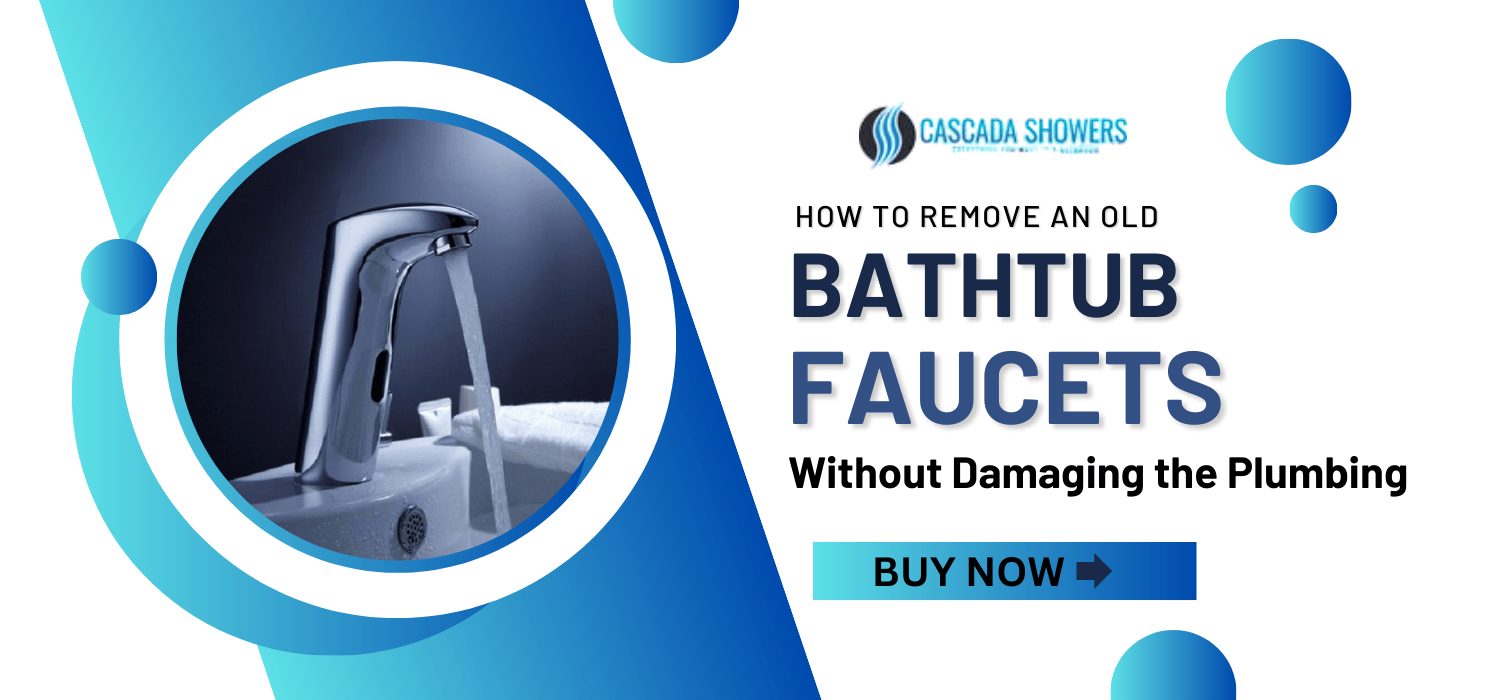Tackling an Old Bathtub Faucet
Just alone fixing your bathtub faucet can give it a whole new look and fix any leaky issue that has existed for quite some time. But, replacing a bathtub faucet without affecting pipes needs proper tools, methods, and measures. No matter if you are changing simple lighting or repairing a faucet that has been drip for months, this article will cover everything step by step. By the end of it, you will be confident enough to take on this DIY project, without blowing through your wallet on avoidable mistakes.
Understanding Your Faucet Type
Since bathtub faucet removal requires a certain level of understanding, you need to know what kind of faucet you’re dealing with. This helps in making sure that the right method of removal is used.
Common Types of Bathtub Faucets:
- Compression Faucets: Have 2 handles to control both hot and cold water.
- Cartridge Faucets: Make use of a cartridge to regulate flow, and temperatures of water.
- Ball Faucets: It is to have one prong that rotates on a ball-shaped structure.
- Disk Faucets: They should use ceramic disks for flow and temperature control that would change with the pulsing.
Knowing which faucet you have will assist in developing your removal method so that you do not harm your sink in the process.
Tools You’ll Need for the Job
As you will notice having appropriate equipment when replacing a bathtub faucet ensures that parts of the plumbing are not destroyed.
Essential Tools:
- Flathead screwdrivers and Phillips screwdrivers
- Fuel, oil used to penetrate or lubricate.
Optional Tools:
- Basin wrench to get at tough-to-access positions on a fitting.
- Pair of pliers and a pipe wrench for hard-to-budge parts
It will be useful to have these tools at hand when it will be needed to avoid unnecessary time spent on it.
Preparing Your Workspace
This also means that should the sink and other plumbing fixtures need to be eliminated, the work environment is adequately prepared so as not to cause further harm to the pipes themselves.
Steps to Prepare:
- Turn Off the Water Supply: Find and turn off the water supply to minimize water loss issues.
- Drain Excess Water: Turn on the faucets with the sole purpose of clearing any water that remains in the pipes.
- Clear the Area: Clear items of the working space around the bathtub, to meet comfortable working conditions.
- Protect Surfaces: Place clean towels or plastic drops on the tub and around it to avoid scratching or wearing off the tub or soiling the floor.
The above steps make sure that they prevent day-to-day accidents that are caused by improper handling of equipment and preying on records and papers in the working space.
Step-by-Step Guide to Removing an Old Bathtub Faucet
1. Remove the Faucet Handles
- In case the shoe has special decorative caps, they have to be removed using a flathead screwdriver.
- Open the handle screws and pull lightly the handles from the wall part.
2. Detach the Spout
-
Identify whether the spout is threaded or slip-on:
- Threaded Spout: Take it loosened counterclockwise with an adjustable wrench.
- Slip-On Spout: Animals, he loosens the set screw underneath with an Allen wrench and slides the spout off.
3. Look for rust or difficult to remove screws
- Use penetrating oil with stuck or corroded parts to free them up.
- Most of the plumbing attaching methods should not apply forces that are likely to harm the plumbing hence to avoid damage gently wiggle the components.
4. Remove the Faucet Body
- Remove the mounting nuts or bolts that hold the faucet body to the plumbing.
- Pull away the faucet body from the wall with a lot of care.
5. Take off the Cap of the Plumbing (if Required)
- Plumber’s tape should be used to temporarily seal exposed pipe threads to keep debris away from the pipes.
Five common challenges and how to fix them
In fact, changing an old bathtub faucet may not be as easy as it seems.
Stubborn Spouts or Handles
- Try turning and twisting parts that are stuck; they may come apart when they warm up with the use of a hairdryer.
Stripped Screws
- Make use of a Screw extractor in the removal of stripped or damaged screws efficiently.
Hidden Mounting Screws
- Some are attached and hidden under a cover plate or around the spout base with concealed screws.’
Therefore, solving these challenges patiently and having the right tools will in most cases lead to a proper removal process being undertaken.
Guidelines for the Assessment of Plumbing for Harm
Ensure you also assess the plumbing region around the sink after you have almost or already removed the old faucet. This makes early detection critical to avoid the cost of having to repair, replace, or renovate again.
Key Inspection Points:
- Inspect for deposits or buildup on valves or inside pipes and tubes.
- Look for signs of water leakage on the wall opening and signs of mold.
- Check that all fixtures’ connections are well fixed and not leaking.
If you note complications, it may be a good idea to get a professional plumber to check out the problems before a new fixture is put in.
Conclusion:
Refitting a new bathtub faucet seems easy, but the process starts with the removal of the old one which seems complicated but when done correctly it can be achieved by the use of the following technique. By successfully following this guide, you can renovate your bathroom, replace your faucet, and retain the plumbing without the need for professional help. Boast of the accomplishment and relish the outcome because of a well-done home improvement task.

